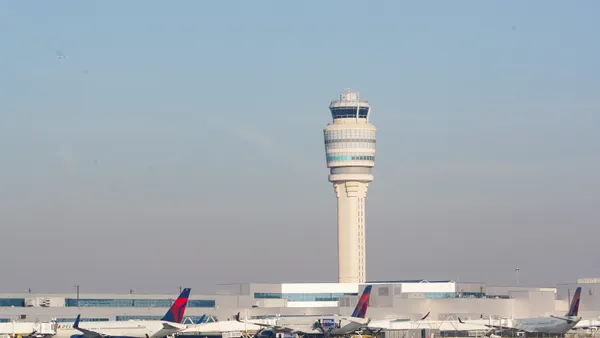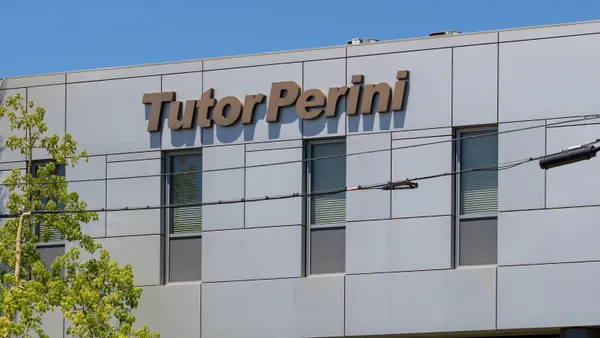Dive Brief:
- The Maryland Department of Transportation (MDOT) and the Maryland Transportation Authority (MDTA) have announced a short list of four teams that will compete for the public-private partnership (P3) role for Phase I of the state's $9 billion to $11 billion I-270/I-495 Capital Beltway traffic relief plan. The MDOT has estimated that the phase will cost between $2 billion and $5 billion.
- The four teams, all of which responded to the state's request for Statements of Qualifications in May, are Accelerate MarylandExpress Partners, Accelerate Maryland Partners LLC, Capital Express Mobility Partners and Potomac Mobility Group. The winner will serve as the project developer and will design, build, finance, operate and maintain Phase I managed lanes. The project will also see the replacement of the American Legion Bridge, which spans the Potomac River and connects Maryland and Virginia.
- The state expects to issue a final Request for Proposals to the four teams by this fall and receive responses by early 2021, with the final selection, approval and commercial close to take place by spring 2021. A managed lane study, which is currently evaluating a no-build scenario and six alternative managed lane options, is still underway.
Dive Insight:
The teams will also work with the MDOT and MDTA to fine-tune the commercial and technical aspects of the final RFP. The members of each team are:
Accelerate MarylandExpress Partners
- Lead Project Developer/Equity: Itinera Infrastructure & Concessions Inc.
- Lead Contractors: Halmar International LLC and Itinera S.p.A
- Designer: Atkins North America Inc. and Gannett Fleming Inc.
Accelerate Maryland Partners LLC
- Lead Project Developer/Equity: Transurban (USA) Operations Inc. and Macquarie Infrastructure Developments LLC
- Lead Contractor: Archer Western Construction LLC
- Designers: Dewberry Engineers Inc. and Stantec Consulting Services Inc.
Capital Express Mobility Partners
- Lead Project Developer/Equity: Cintra Global SE, Meridiam Capital Express LLC, and John Laing Investments Limited
- Lead Contractor: Ferrovial Agroman US Corp.
- Designers: AECOM Technical Services Inc.
Potomac Mobility Group
- Lead Project Developer/Equity: ACS Infrastructure Development Inc.
- Lead Contractor: Dragados USA Inc.
- Designers: Parsons Transportation Group Inc., Jacobs Engineering Group Inc. and HDR Engineering, Inc.
When complete, the new beltway and bridge are expected to help reduce some Washington, D.C.-area commuters' travel time by 50%, cut congestion in non-managed lanes by 25%, increase lane capacity on the bridge by 40% and provide bicycle and pedestrian routes across the Potomac.
Apparently, problems on the $5.6 billion Purple Line light-rail P3 in Maryland hasn't put the state off that particular delivery method entirely. During the last several months, both the design-build arm of the P3, Purple Line Transit Constructors, and the lead and equity partner, Purple Line Transit Partners, have both stated their intentions to walk away from the project if they cannot reach a deal on additional money for delays and cost overruns.
The project got off to a rocky start after local activists who wanted to see the project canceled managed to tie it up in court, causing significant delays.
Government agencies have turned to P3s when they want to shift the risk of a major construction project to a private concern, particularly when they want to shift the financing risks and responsibilities.
Last week, another agency that has been plagued with cost overruns and delays took a concrete step toward selecting a P3 consortium to wrap up a multibillion-dollar rail project.
The Honolulu Authority for Rapid Transportation and the city of Honolulu accepted proposals from P3 teams for the completion of the $9 billion Honolulu rail project but gave no information on who submitted bids or at what prices, according to Honolulu Civil Beat. Estimates as of November put the value of a P3 to finish the last 4 miles of the 20-mile project at approximately $1.4 billion.
Project officials settled on a P3 to complete the last leg of the rail line to spread out the risk of urban construction such as demolition, different subsoils and the potential discovery of unmapped utilities or native burial sites. HART has come under fire from federal and local watchdogs who have alleged mismanagement of project funds and the project itself.












